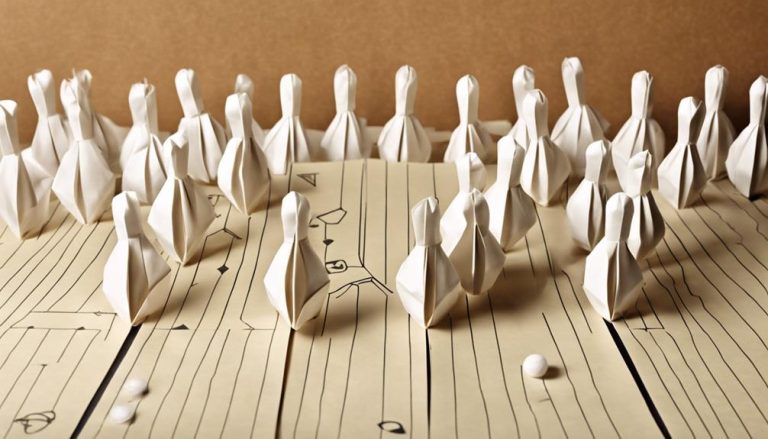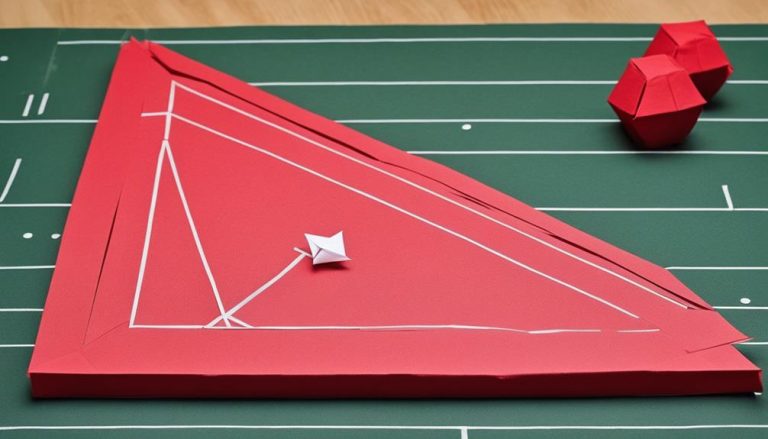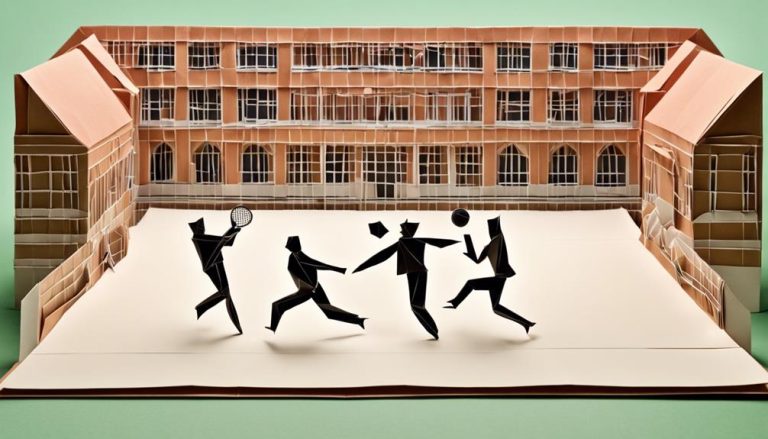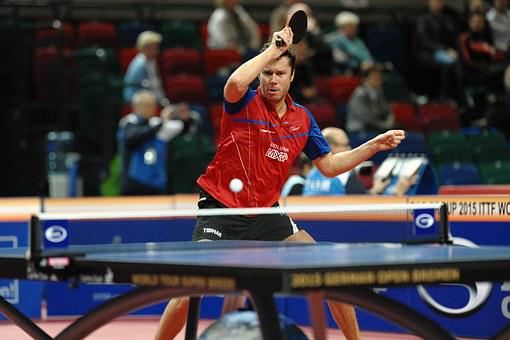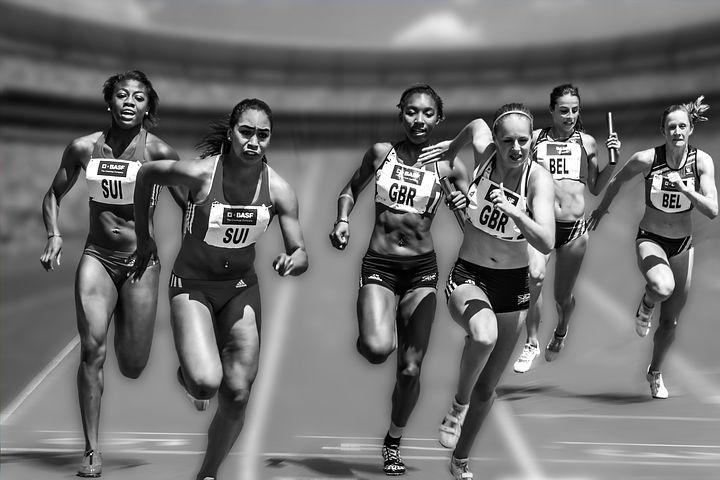General Rules of Wheelchair Rugby League
Wheelchair rugby league is an under-appreciated adaptive sport that combines high-speed, full-contact gameplay with inclusivity. Two teams of up to twelve athletes crash chairs and battle to carry a ball over the try line. Hits are hard, action is constant, and athleticism is on full display. With a deeper knowledge of the general roles, rules, equipment, and formats, anyone can gain an appreciation for this exceptional team sport.

This article covers the fundamentals of wheelchair rugby league to showcase why it warrants more public enthusiasm. We’ll highlight the distinct player roles, specialized wheelchair for impacts, basics of passes, carries, tackles, and tries for scores. The parallels and differences to traditional rugby provide insight into strategy and teamwork. Once informed about gameplay and regulations, the speed, grit, teamwork, and sheer skill of these athletes becomes apparent. Wheelchair rugby league has earned recognition as more than just an adaptive event. Let’s examine the basic player roles and equipment involved first.
Overview of Wheelchair Rugby League
You’ll get an overview of wheelchair rugby league and its general rules in this article. Wheelchair rugby league is a sport that’s played on a court similar to a basketball court. Two teams of four players compete against each other, using their wheelchairs to maneuver and push the ball across the court. The main objective of the game is to score points by pushing the ball into the opponent’s goal.
Team dynamics are essential for success in wheelchair rugby league. The team has to work together to move the ball down the court and score points. Players have to be strategic in their movements and know how to use their wheelchairs to their advantage. Communication between the players is also important in order to coordinate moves and make sure the ball is passed into the goal.
Wheelchair maintenance is important for safe and successful play. The wheelchairs must be up to standard in order to ensure the safety of the players. Wheelchairs should be regularly checked and serviced to ensure they’re in good working order. Players must also be mindful of their technique and body positioning as incorrect use of their wheelchairs can cause injury.
Wheelchair rugby league has a set of rules and regulations that must be followed in order to play the game. These include rules about how the game is played, such as the size of the court, the number of players, and the time limit. Players must also understand the rules regarding fouls and penalties.
Wheelchair rugby league is an exciting and fast-paced game that’s enjoyed by players and spectators alike. By following the general rules of the game, players can ensure a safe and enjoyable experience. The sport is growing in popularity, and with the right equipment, team dynamics, and maintenance, wheelchair rugby league can be fun and rewarding for everyone involved.
Equipment Requirements
You’ll need certain equipment to safely and effectively play wheelchair rugby league, and it’s important to ensure you have the right gear. Each team must have two wheelchairs, with one chair designated for offense and the other for defense. The chairs should be lightweight and have four, large, skid-resistant wheels. The handrims should be slip-resistant, and the brakes must be in good, working condition. Additionally, helmets, gloves, and elbow and knee pads are required.
It’s important to note that the wheelchairs must be up to code in order to play in an official game. This ensures the wheelchairs are suitable for the sport and also ensures the safety of the players. Each team must also have a designated team captain, who’s responsible for making sure all players are wearing the correct equipment and that the wheelchairs are up to code.
Team dynamics and game strategies are key aspects to playing wheelchair rugby league. As such, it’s important to choose the right wheelchairs to suit the team’s playing style. For example, a team with a more defensive approach might choose heavier wheelchairs with larger wheels and more cushioning, while a team with an aggressive offense might choose lighter wheelchairs with smaller wheels.
Equipment requirements are critical to playing wheelchair rugby league, and they shouldn’t be taken lightly. It’s important to have the right wheelchairs and protective equipment to ensure the safety of all players. Additionally, it’s essential to consider team dynamics and game strategies when choosing the right wheelchairs to suit the team’s playing style.
With the right equipment and strategies, a team can be successful in wheelchair rugby league.
Number of Players
As a team, you’ll need to have at least four players in order to play wheelchair rugby league. All players must wear protective equipment, such as elbow, knee, and wrist pads, as well as helmets and gloves to ensure player safety and prevent injury. Each team can have up to twelve players on the court at any one time, with four players from each team on the court at any given moment. Substitutions can be made at any time during the game, as long as the team doesn’t exceed twelve players on the court.
Players must ensure that they’re seated securely in their wheelchairs before the start of the game. Additionally, wheelchair rugby league players must wear jerseys that display their team name and number clearly. The referee will inspect the players’ wheelchairs before the start of the game to make sure they meet the rules and regulations of the league.
When playing wheelchair rugby league, all players must be aware of their surroundings and the other players on the court. The referee will be watching for any physical contact between players that could result in injury. It’s important to remember that the goal of the game is to score points, not to cause injury to other players.
Players should also be aware of their own safety when playing wheelchair rugby league. It’s important to be mindful of the court and to avoid any obstacles that could cause an injury. Additionally, players should be aware of the type of clothing they’re wearing, as some materials may be more prone to causing injury.
The rules of wheelchair rugby league are designed to ensure player safety and injury prevention. With the right equipment and an understanding of the rules and regulations, wheelchair rugby league can be an enjoyable and safe sport for all involved.
Playing Area
You will need to play on a designated court in order to participate in wheelchair rugby league. The playing area should be big enough to facilitate a safe and enjoyable game. Generally, wheelchair rugby courts are made up of a smooth, flat surface that allows wheelchairs to move freely. Different surface types, such as wood, asphalt, or carpet, may be used depending on the environment. In addition, the court should have painted lines that divide it into two halves, along with out-of-bounds lines.
The size of the court should also be considered. The court should measure 28m x 14m, with a minimum of 1.5m along each side of the court. The court should also have a minimum of 4m of space between the two end lines. The goal area should have a radius of 4m and must be located at least 4m away from the sideline. Finally, the court must have a minimum of 4m between the goal area and the sideline.
Safety should be the number one priority when playing wheelchair rugby league. The court size and surface type should be appropriate for the game, and should be conducive to an enjoyable experience. All players should adhere to the rules and regulations of the court in order to ensure their safety and the safety of their teammates.
Wheelchair rugby league is a great way to stay active and have fun, and by following these guidelines you can guarantee a safe and enjoyable experience.
Scoring System
You’ll need to know the scoring system of wheelchair rugby league in order to understand how the game is played. The sport is played on a court, and the objective is for each team to score the most points within the allotted time. The team with the most points at the end of the game is declared the winner. Wheelchair rugby league has a point system that rewards strategic development and competitive edge.
A game of wheelchair rugby league is divided into four 8-minute quarters. During each quarter, each team attempts to score points by carrying the ball across the court and into the opposing team’s goal zone. If the ball is carried into the goal zone without being touched by an opposing player, then the team is awarded one point. If the ball is touched by an opposing player, then the team is awarded two points.
In addition, teams can score three points for each goal scored from a wheelchair rugby league throw-in. A throw-in is when the ball is thrown from the center of the court to one of the teams’ goal zones. The team that’s successful in throwing the ball into the opposing team’s goal zone is awarded three points.
In wheelchair rugby league, there are also two-point fouls. These are awarded when a player commits a violation such as travelling, going out of bounds, or carrying the ball for more than 10 seconds. In addition, a two-point penalty is given if a team fails to throw the ball within 10 seconds of gaining possession.
Wheelchair rugby league is a fast-paced sport that requires strategy development and a competitive edge to score points. Knowing the scoring system of the game is essential in order to understand how it’s played. With a bit of practice and knowledge, players can develop their skills to become successful in wheelchair rugby league.
Fouls and Penalties
Along with understanding the scoring system, you must also be aware of the fouls and penalties in wheelchair rugby league. In general, player contact is not allowed and any contact that may occur will be considered a foul. All players must stay within the designated field layout and must not cross any boundaries. If a player crosses any boundaries, that player will be called for a foul.
The following table provides an overview of the most common fouls and penalties in wheelchair rugby league.
| Foul | Penalty | Description |
|---|---|---|
| Obstruction | Free Throw | Occurs when a player impedes the progress of an opposition player in any way. |
| Illegal Push | Free Throw | Occurs when a player makes contact with an opposing player in a manner that is not allowed, such as pushing or striking. |
| Out of Bounds | Free Throw | Occurs when a player crosses any boundaries or leaves the field of play. |
| Unsporting | Yellow Card | Occurs when a player displays unsporting behaviour, such as verbal abuse or inappropriate gestures. |
| Dangerous Play | Red Card | Occurs when a player engages in a dangerous manner, such as deliberately striking another player or using excessive force in a tackle. |
It is important to note that fouls and penalties may vary depending on the league and the rules of the game. Therefore, it is important to understand the specific rules and regulations of the league in which you are playing.
Duration of Play
You’ll have a set amount of time to play each game of wheelchair rugby league. To ensure that each game is fair and intense, there are strict timing regulations in place.
- Timing Regulations:
- Each game is played in two, twenty-minute halves
- The clock will stop after each score, and will also stop for timeouts or injuries
- After halftime, the clock will start again and play will resume
- Game Intensity:
- There’s a five-minute break between halves
- After each goal, the team who scored will have 15 seconds to restart the game
- If a team fails to restart the game within the 15-second time frame, the other team is awarded possession of the ball
- Each team is allowed one timeout of 30 seconds per half
These rules ensure that the game progresses at a steady pace and that the game intensity is kept up. It also ensures that the game doesn’t become too drawn out, which can lessen the excitement of the game for players and spectators alike.
Wheelchair rugby league is a fast-paced and exciting sport, and these rules help to maintain the energy and passion of the game. The timing and intensity regulations are designed to ensure that each game runs smoothly and that each team has an equal chance of winning.
Substitutions
Frequently, you’ll need to make substitutions in wheelchair rugby league. Substitutions provide teams with the opportunity to switch players in and out of the game to maximize player safety and game strategy.
Players must be substituted in the field of play. Substitutions can be done at any time, including during a timeout, and teams may substitute up to four players at one time. However, teams must wait until the next stoppage of play to switch in more than two players at a time.
In wheelchair rugby league, substitute players may enter the field of play when the player being substituted has left the field. The player being substituted must leave the court before the substitute enters the field of play. If this rule is broken, the referee will blow the whistle to stop play.
Substitutions must be done in a timely manner. If a team doesn’t replace a player or substitutes a player too slowly, the referee can issue a yellow card to the team’s captain. If a substitute player isn’t ready to enter the field when the substitute player’s teammate is ready to leave, the referee can issue a red card to the team’s captain.
In addition, teams must notify the referee when substituting players. The referee must be informed which players are being substituted and which players are coming in. Once the referee has acknowledged the substitution, the new players may enter the field.
Finally, substitute players must wear a different jersey than other players on the team. This helps the referee easily identify which players have been substituted.
Substitutions can be used by teams to maximize player safety and game strategy. Knowing the rules of substitutions is essential for any wheelchair rugby league team.
Timeouts
You’ll also need to know the rules for timeouts; these allow teams to strategize or rest during the game. Timeouts are an important part of the game, as they can refresh the team and allow them to develop new strategies.
Each team is allowed two timeouts per game, each one lasting 90 seconds. Teams are allowed to call a timeout during the game, as long as they’ve one left. During timeouts, the players can take time to self-reflect on the game and think of any changes they might need to make.
It’s important to note that timeouts aren’t just used for strategy, but also for team dynamics. During timeouts, players can talk to each other and work out any issues they may have. They can also use the time to develop new tactics and plan out their next steps.
At the end of the timeout, the teams are allowed to make up to three substitutions. This can be beneficial if a team needs to change up their players to gain an advantage in the game.
Timeouts are a great way for teams to take a break from the game and work out any issues they may have. They can also be used to strategize and give the team a chance to reflect on their performance and make any necessary changes. Self-reflection and team dynamics are important aspects of the game and timeouts can help teams reach their peak performance.
Post-Game Procedures
After the game, you’ll need to follow certain procedures to ensure the safety and fair play of all players. Before leaving the court, each team should check their equipment and make sure all is accounted for. Coaches should communicate with each other to ensure that all the necessary paperwork has been filled out correctly and that any injuries have been noted.
Teamwork is essential in a successful post-game procedure. Both teams should work together to ensure that the court is cleaned and all equipment is put away properly. It’s also important to ensure that any necessary post-game meetings are held, and that any disputes are settled.
The coach should provide a post-game debriefing to their team. This is a great opportunity to discuss performance and strategize on how to improve for their next game. It’s also an opportunity for the coach to recognize the team’s accomplishments and to provide positive feedback.
Finally, coaches should exchange contact information in case of any future disputes or questions. This will ensure that communication between the two teams remains open and that any issues can be resolved quickly and efficiently.
Post-game procedures are an important part of wheelchair rugby league. By following these procedures, teams can ensure that everyone is safe and that the game is played in a fair and respectful manner. Teamwork and coach communication are essential for successful post-game procedures.
Frequently Asked Questions
Are There Any Age Restrictions to Participate in Wheelchair Rugby League?
Yes, there are age restrictions to participate in wheelchair rugby league.
Depending on the organization, the age range for athlete eligibility varies.
Generally, the minimum age for athletes is 16 years.
However, rule modifications may allow younger athletes to participate under the supervision of a guardian or coach.
Additionally, the upper age limit is usually not specified, and is determined by the athlete’s ability to safely compete in games.
Are There Any Special Qualifications or Certifications Necessary to Referee a Wheelchair Rugby League Match?
Yes, there are specific qualifications and certifications required to referee a wheelchair rugby league match.
Referees must have a thorough understanding of the rules and regulations of the sport.
Additionally, they must be certified through an accredited training program.
This program provides referees with the necessary knowledge and skills to properly officiate a match and ensure that all rules are followed.
After successful completion of the certification process, referees are granted official status to referee wheelchair rugby league matches.
Is There Any Special Equipment or Adaptations That Need to Be Made for Players With Physical Disabilities?
Yes, there are special pieces of adaptive equipment or modifications that need to be made for players with physical disabilities participating in wheelchair rugby league.
Depending on the type of physical disability, different accessibility requirements may be necessary. These can range from special seating and harness systems to adjustable footrests and specialized wheelchairs.
Additionally, custom-made protective guards and helmets may be necessary to ensure the safety of the player. All of these modifications must be approved by a qualified medical professional in order to ensure the safety and accessibility of the player.
Are There Any National or International Wheelchair Rugby League Tournaments?
Yes, there are national and international wheelchair rugby league tournaments.
Every year, travelling teams compete in tournaments all over the world.
In 2019, over 500 teams from 24 countries participated in the International Wheelchair Rugby Federation World Championship tournament.
During the tournament, teams compete against each other in a round-robin system, with the top teams in each group progressing to the next round.
The tournament also includes rankings of nations based on their performance in these tournaments.
It’s an incredible opportunity for teams to showcase their skills and abilities and to compete at the highest level.
Are There Any Special Safety Guidelines or Protocols to Follow While Playing?
Yes, there are specific safety guidelines and protocols to follow while playing wheelchair rugby league in order to protect players and prevent injury.
Players must be seated properly in the wheelchair, with feet, legs, and arms properly secured. It’s important that the wheelchair is in good condition and not damaged in any way.
All players are required to wear protective helmets, gloves, and full-length leg guards.
The ball mustn’t be thrown above shoulder height and must be thrown underarm.
The court should be free of any obstacles or obstructions.
Wheelchair rugby league is an exciting, fast-paced game that allows for fair competition between players of all abilities. It’s essential that players adhere to the general rules of the game to ensure a safe and successful experience.
For example, a recent case study of a wheelchair rugby league tournament showed that when the rules were followed, a successful, competitive match was enjoyed by all.

